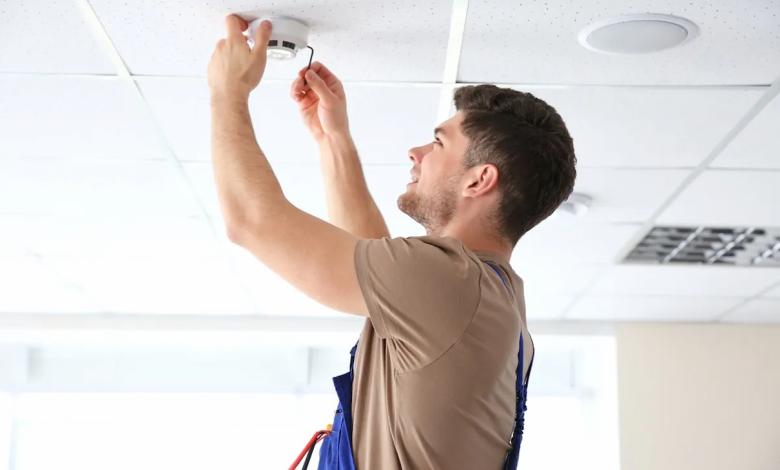How to Conduct Fire Drills for Commercial Buildings?

Conducting a fire drill involves a structured and rehearsed exercise designed to acquaint individuals with the necessary actions in the event of a fire emergency on the premises. Its primary objective is to facilitate a swift, organised, and secure evacuation, thereby mitigating the risk of injuries or fatalities. These drills are indispensable for bolstering safety preparedness, providing opportunities to rehearse emergency protocols, and instilling confidence in occupants. Moreover, regular fire drills serve as educational tools, imparting crucial fire safety knowledge and fostering adherence to regulations. For commercial
properties in Manchester, installing a reliable commercial fire alarm Manchester is essential to promptly alert occupants during emergencies, enhancing the effectiveness of fire drill exercises. Through active participation and continuous practice, individuals can better safeguard themselves and others, ensuring a proactive approach to fire safety. In this article, we’ll explore the steps involved in conducting effective fire drills for commercial buildings.
Educating Participants about Fire Safety:
Before initiating the drill, it’s imperative to provide thorough education to all employees or residents regarding the drill’s purpose, procedures, and expected actions. This comprehensive awareness serves as the foundation for an effective response to fire emergencies. By understanding the importance of fire safety measures and their role in the evacuation process, participants are better equipped to respond swiftly and decisively in real-life scenarios.
Conducting Mock Scenarios:
The core of any fire drill lies in practising evacuation procedures. Occupants must acquaint themselves with the building’s escape routes, exit doors, and designated assembly points. This familiarity with the surroundings can be invaluable during an actual fire emergency, potentially saving lives. Through simulated scenarios, individuals gain confidence in navigating the evacuation process, ensuring a smooth and orderly evacuation when faced with a real threat.
Demonstrating Proper Use of Fire Extinguishers:
In certain settings, specific individuals may receive training on the use of fire extinguishers. As part of the drill session, it’s essential to provide instruction on the correct utilisation and handling of fire extinguishing equipment. However, it’s crucial to emphasise that only trained personnel should attempt to use fire extinguishers during real fire emergencies. By demonstrating proper usage techniques during drills, individuals with the appropriate training can effectively respond to small fires, helping to contain them before they escalate into more significant threats. This hands-on experience instils confidence and reinforces the importance of fire safety practices in the workplace or residential environment.
Evaluating Response Time:
Monitor and meticulously record the evacuation time of employees during drills, with the objective of continual improvement. By consistently striving to reduce response times, businesses can enhance their overall fire drill effectiveness. If optimising your fire drill response is a priority, consider enrolling in one of our Fire Safety Training Courses. Our courses are designed to equip you and your employees with the skills and knowledge needed to improve evacuation efficiency and ensure a prompt response to fire emergencies.
Debriefing & Gathering Feedback:
Following each drill, conduct a comprehensive debriefing session to gather feedback from participants. This feedback is invaluable for identifying weaknesses in evacuation procedures and pinpointing areas for improvement. By actively involving employees in the post-drill analysis, businesses can foster a culture of continuous improvement and enhance overall fire safety preparedness.
Establishing a Regular Schedule:
Maintain a regular schedule for conducting fire drills, allowing all employees ample opportunities to practice their emergency response skills. According to UK government regulations, workplaces are required to conduct fire alarm drills at least once a year. Our Fire Safety Training Courses can complement these drills by providing additional hands-on practice and theoretical knowledge. With our courses, you and your employees can maximise the benefits of regularly scheduled fire alarms, ensuring readiness for any potential emergency.
Place Observers:
Deploying observers during a fire drill provides a valuable opportunity to evaluate employee performance under pressure. Observers can assess how individuals collaborate with their colleagues and fulfil their respective responsibilities during simulated emergencies. By closely monitoring interactions and actions, businesses gain insights into teamwork dynamics and individual competency levels. Additionally, observers can identify areas for improvement and provide constructive feedback to enhance overall emergency response preparedness. This active observation process ensures that employees are adequately prepared to effectively navigate real-life fire scenarios with confidence and efficiency.
Conclusion:
Regular fire drills are essential for maintaining a safe environment in commercial buildings and ensuring the preparedness of occupants in the event of a fire emergency. By establishing comprehensive plans, communicating procedures effectively, and conducting drills regularly, building managers can enhance safety measures and minimise the potential risks associated with fires. Continuous evaluation and improvement of fire drill procedures are crucial for adapting to changing circumstances and maintaining readiness for emergencies. Remember, preparation is key to protecting lives and property in the face of fire hazards.
Also read more: https://www.businessnewstips.co.uk/business-ideas/upgrading-your-fire-safety-measures-what-you-need-to-know/



